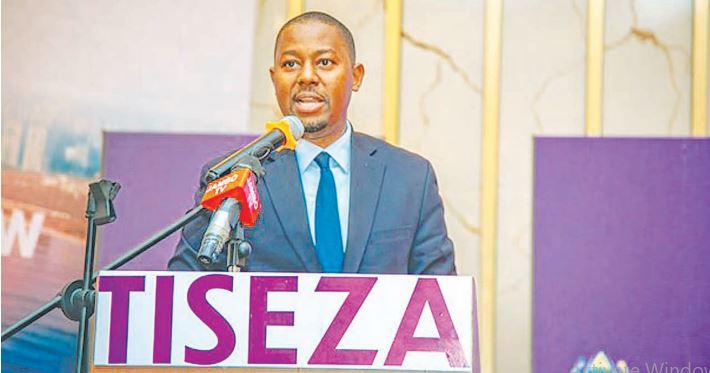How TISEZA empowers private sector to deliver Vision 2050

DAR ES SALAAM: THE Tanzania Investment and Special Economic Zones Authority (TISEZA) has launched five Special Economic Zones (SEZs) as part of the government’s deliberate efforts to enhance the private sector’s participation in realising of the National Development Vision 2050.
With SEZs, TISEZA sees the private sector as a driving engine towards full execution of the upcoming Vision 2050 which aims at elevating the country into a trillion-dollar economy.
The selected investment areas are envisaged to Tanzania as Africa’s manufacturing hub in efforts of improving citizens’ livelihoods and elevating the country’s GDP growth rate. The SEZs aligns target to transform Tanzania into a competitive and export-oriented economy.
Speaking in a panel discussion during the Media Council of Tanzania’s (MCT) 27th Annual General Meeting in Dar es Salaam recently, TISEZA’s Acting Director of Investment Promotion, Mr George Mukono said the authority facilitates implementation of the new Vision 2050 by putting in place a favourable business atmosphere featured with SEZs for the private sector to injecting their capital.
“The critical role of TISEZA in ensuring success of the Vision 2050 is to create predictable environment for business,” Mr Mukono said.
Adding “as an authority, we are striving to support local entrepreneurs so that they can grow and their impact can be visible,” Mr Mukono said TISEZA has also eased issuance of the investment permits through the One Stop Facilitation Centre which has over 15 government agencies including the Tanzania Bureau of Standards (TBS) and the Tanzania Revenue Authority (TRA).
TISEZA provides end-toend services including investor registration, licensing and aftercare, significantly reducing red tape and accelerating timeto-operation.
The five SEZs launched recently include Buzwagi SEZ in Shinyanga spanning 1,333 hectares, Bagamoyo Eco Maritime City SEZ (151 hectares), Kwala SEZ in Coast Region (40.5 hectares), Nala SEZ in Dodoma (607 hectares) and expanding the existing Benjamin William Mkapa SEZ in Dar es Salaam with over 13,000 square metres.
All five SEZs are strategically connected to readybuilt infrastructure including power supply, water, roads, telecommunications, dry ports like Isaka in Shinyanga and Kwala in Coast Region as well as the Dar es Salaam Port.
Plans are also ongoing to integrate them with the electrified Standard Gauge Railway (SGR) which is under construction. Mr Mukono said the SEZs intend to boost the country’s exports and the economy at large.
ALSO READ: TISEZA, Sterling Bank to advance Vision 2050
“We start with products that touch normal citizens and provide sectorial linkage,” he said.
Regarding incentives at the SEZs, Mr Mukono assured them of firm support including cost-free project land.
He underlined the fact that the Vision 2050 draws about 70 per cent of its players from the private sector with investment as the engine of economic transformation.
The SEZs are tailored with mandatory requirements including local content of at least 30 per cent Tanzanian ownership and employment creation target of at least 100 direct payroll jobs.
Addressing investors in August this year during the launch of the National Promotion Campaign for investment in the SEZs, Minister of State in the President’s Office (Planning and Investment), Professor Kitila Mkumbo said the SEZs are poised to enhance production in every region in the country.
“Our vision is to ensure every region benefits from industrial growth and contributes to national GDP. This aligns with our broader goal of making Tanzania the industrial hub of Africa, leveraging our strategic location, fertile land, abundant natural resources and access to raw materials,” Prof Mkumbo said.
He said to achieve the one trillion-dollar economy, the country’s GDP growth rate should reach at least eight to 10 per cent by 2050 from the current about 5.5 per cent.
Effective implementation of the Vision will begin on July 1, 2026 with the primary goal of leading Tanzania into diversified upper-middleincome economy.
According to the World Bank, upper middle-income economies are those with a Gross National Income (GNI) per capita between 4,466 US dollars (over 11m/-) and 13,845 US dollars (37m/-).
Prof Mkumbo said the investment zones which are linked to markets prioritise projects which have an employment multiplier potential, can enhance value addition and sectorial linkage while contributing substantially to revenue generation from mainly domestic investors and joint ventures.
Prof Mkumbo said investments in value addition will strengthen Tanzania influence in the international markets by exporting only processed products.
Globally, he said SEZs have been a critical policy tool for attracting investment and driving industrial development.
In that regard, he directed TISEZA to create visibility of the SEZs by welcoming both domestic and foreign investors.
Furthermore, Prof Mkumbo urged TISEZA to collaborate with Local Government Authorities (LGAs) in guiding investors across the countries to tap economic opportunities in the SEZs.
Overall, Prof Mkumbo said the government under President Dr Samia Suluhu Hassan is committed to continuing improving the investment atmosphere by putting in place tax reforms and incentives for business growth.
“The government stands ready to support investments, we are open for engagements” Prof Mkumbo said.
ALSO READ: Tanzania seeks to enact, amend laws to align with the country’s Vision 2050
Meanwhile, TISEZA’s Director General, Mr Gilead Teri said the SEZs focus on ten priority sectors including pharmaceutical, car assembling and electronic plants, paper products and packaging materials, manufacturing of machineries and agriculture implements, textiles and apparels, edible oil and timber industries.
He encouraged domestic investors to forge partnerships with foreign investors to invest in the aforementioned sectors.
In an interview, Chief Executive Officer (CEO) of Amimza Limited, Mr Amir Hamza, a domestic investor venturing in coffee production said the joint ventures under the SEZ model will help attract more capital and cutting-edge technologies, essential for industrial transformation.
Reacting, Business and Entrepreneurship Expert, Dr Sylvester Jotta based at the Saint Augustine University of Tanzania (SAUT) said the stand-by investment areas allow investors to make quick business decisions on where to pour their capitals thereby easing development of industries in line with the Vision 2050.
As a result, he said the SEZs will create jobs to youth and widen the country’s tax base while transforming the host communities into more modernised towns.
“Already, I have seen noticeable urbanisation at the Kwala compared to previous years,” Mr Jotta said.
In a related development, he anticipated consolidation of the Tanzania’s shilling against foreign currencies due to the increase in exports from the new industries the country.
“Within ten years to come Tanzania is going to experience a significant boost in trade. We are going to have a robust economy in East Africa, our currency will be very strong and eventually, our purchasing power will be very strong,” Mr Jotta said.
Adding “massive development of industries discourages importation and boosts export,”
Economist, Professor Kitojo Wetengere said the SEZs are due to help locally valued added products to penetrate directly to the international markets, a situation which in return will earn Tanzania foreign currencies.
Overall, he said the economic zones will stimulate the entire production chain as in most case all industries will use local raw materials to produce goods.





